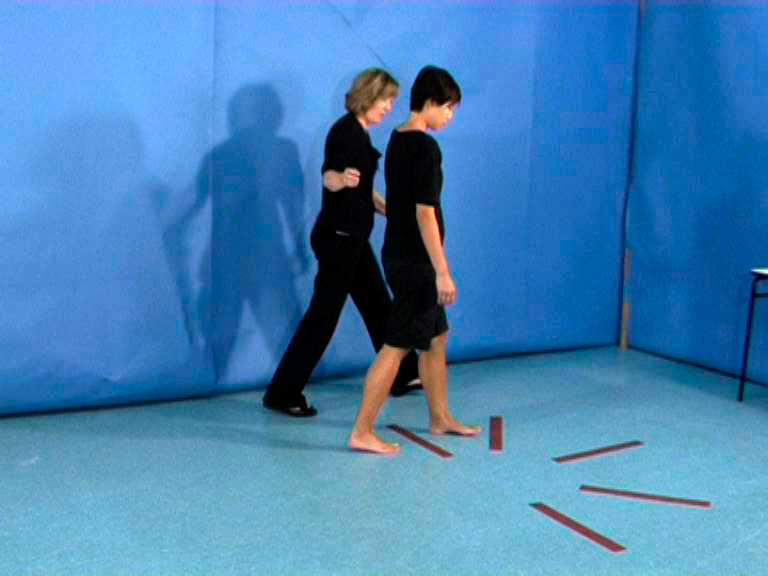AIM:
To improve turning while walking.
Rationale:
Loss of balance and freezing are reduced by ensuring the patient turns in a wide arc rather than swivelling on the spot. Strategies include:
- Visual cues
- Environmental cues
- Auditory cues
Note: some patients will use permanent visual cues in the home environment and some patients will be unable to perform concurrent tasks without increasing the risk of freezing and/or falling.
Equipment:
- Chair
- Strips of cardboard (5 cm by 55cm) for visual cues
- Metronome for auditory cues
Key Points:
- Set up the environment so that turning while walking is necessary
- Encourage patient to turn in a large arc instead of swiveling on the spot
- Ensure therapist stays close by to steady patient if necessary
- When using auditory cues, set auditory cue frequency 10% below the patients preferred cadence (usually 60-80 bpm)
Common Errors:
- Patient swivels on the spot instead of turning
- Therapist does not stay close enough to steady the patient if necessary
- Therapist gives explanations or instructions while the metronome is “beeping”
Progression and Variety:
- Adjust auditory cue frequency according to patient response
- Add a manual and/or cognitive task while turning
- Remove cues and encourage patient to self-cue
